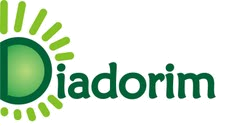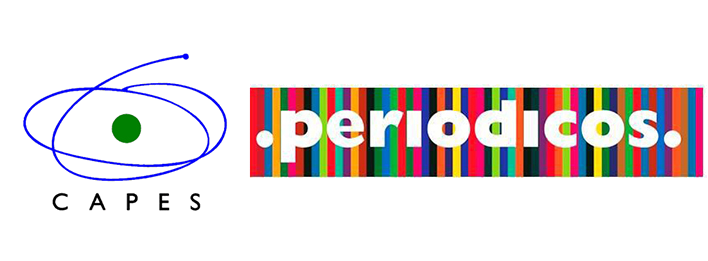Multiplicity and complexity of travel purposes
evidences from tourism demand of a large city
DOI:
https://doi.org/10.29149/mtr.v5i1.5807Keywords:
Travel purpose, Travel motivation, Tourist, Tourist behavior., Travel purpose, Travel motivation, Tourist, Tourist behaviorAbstract
This article focuses on travel purposes by discussing and clarifying the nature of this variable from
conceptual and empirical perspectives. Traditional ways of gathering and presenting information about
travel purposes are inadequate as they simplify reality, disregarding relevant aspects for a
comprehensive inquiry on the subject. A first omission concerns multiple purposes of a single trip
since most surveys currently record only the main travel purpose. Another issue is the heterogeneity
encompassed by the broad categories generally used to describe travel purpose. This article presents
and discusses the results of four surveys that interviewed a total of 4,216 tourists who visited São
Paulo city. The multiple and heterogeneous aspects of travel purposes are examined in detail from
tourists' perspectives. Some recommendations to better specify usual travel purpose concepts are
presented. The paper also suggests that tourism demand questionnaires should be more detailed to
capture travel purposes appropriately. The multiplicity and complexity of travel purposes should not
be underestimated. Recognizing multiple purposes and the heterogeneity encompassed by traditional
travel purpose categories are important steps for better understanding, explaining, and predicting
tourism demand and consumption.
References
Becken, S., Simmons, D., & Frampton, C. (2003). Segmenting tourists by their travel pattern for insights into achieving energy efficiency. Journal of Travel Research, 42(1), 48-56. Disponível em: https://doi.org/10.1177/0047287503253938. Acesso em 15 jul 2019.
Beni, M. (2006) Análise estrutural do Turismo. (11a ed.). São Paulo: Editora Senac São Paulo.
Cohen, E. (1974). Who is a Tourist?: A Conceptual Clarification. The Sociological Review, 22(4), 527–555. https://doi.org/10.1111/j.1467-954X.1974.tb00507.x
Crompton, J. L. (1979). Motivations for pleasure vacation. Annals of Tourism Research, 6(4), 408–424. https://doi.org/10.1016/0160-7383(79)90004-5
Dann, G. M. S. (1981). Tourist motivation an appraisal. Annals of Tourism Research, 8(2), 187–219. https://doi.org/10.1016/0160-7383(81)90082-7
Dann, G. M. S. (2016). Motivation. In J. Jafari & H. Xiao (Eds.), Encyclopedia of Tourism (pp. 627–631). Springer.
Eftichiadou, V. (2001) A multi-motive segmentation of urban visitors: the case of Liverpool. The Journal of Tourism Studies, 12. (1).
Fodness, D. (1994). Measuring tourist motivation. Annals of Tourism Research, 21(3), 555–581. https://doi.org/10.1016/0160-7383(94)90120-1
Gnoth, J. (1997). Tourism motivation and expectation formation. Annals of Tourism Research, 24(2), 283–304. https://doi.org/10.1016/S0160-7383(97)80002-3
Hawkins, D. I., & Mothersbaugh, D. L. (2010). Consumer behavior: building marketing strategy (11th ed.). New York: McGraw-Hill/Irwin.
Hunt, J. D., & Layne, D. (1991). Evolution of travel and tourism terminology and definitions. Journal of Travel Research, 29(4), 7–11. Disponível em: https://doi.org/10.1177/004728759102900402. Acesso em 23 ago 2019.
Hyde, K. F., & Harman, S. (2011). Motives for a secular pilgrimage to the Gallipoli battlefields. Tourism Management, 32(6), 1343–1351. https://doi.org/10.1016/J.TOURMAN.2011.01.008
Jamal, T., & Lee, J.-H. (2002). Integrating micro and macro approaches to tourist motivations: toward an interdisciplinary theory. Tourism Analysis, Vol. 8, pp. 47–59.
Kozak, M. (2002). Comparative analysis of tourist motivations by nationality and destinations. Tourism Management, 23(3), 221–232. https://doi.org/10.1016/S0261-5177(01)00090-5
Lichy, J., & McLeay, F. (2018). Bleisure: motivations and typologies. Journal of Travel & Tourism Marketing, 35(4), 517–530. https://doi.org/10.1080/10548408.2017.1364206
Cai, L. A., Letho, X. Y., & O'leary, J. (2001) Profiling the U.S.-Bound Chinese Travelers by Purpose of Trip, Journal of Hospitality & Leisure Marketing, 7(4), 3-16, DOI: 10.1300/J150v07n04_02
Lohmann, G., & Panosso Netto, A. (2008). Teoria do turismo: conceitos, modelos e sistemas. São Paulo: Aleph.
Mansfeld, Y. (1992). From motivation to actual travel. Annals of Tourism Research, 19(3), 399–419. https://doi.org/10.1016/0160-7383(92)90127-B
Mckercher, B., & Cros, H. (2003). Testing a cultural tourism typology. Internacional Journal of Tourism Research, 5 (1), 45-48. Disponível em: <https://doi.org/10.1002/jtr.417>.
Acesso em: 23 ago. 2019.
Mckercher, B., & Chan, A. (2005). How Special Is Special Interest Tourism? Journal of Travel Research, 44(1), 21–31. Disponível em: https://doi.org/10.1177/0047287505276588. Acesso em: 23 ago 2019.
Ministério do Turismo. (2019). Pesquisa da demanda turística internacional no Brasil. Brasília: Ministério do Turismo.
Murray, E. J. (1964). Motivation and Emotion. Englewood Cliffs, New Jersey: Prentice Hall.
Observatório de Turismo e Eventos. (2018). São Paulo: Cidade do Mundo. São Paulo. Edição 2018. São Paulo: Observatório de Turismo e Eventos, 2018. Disponível em: http://www.observatoriodoturismo.com.br/pdf/DADOS_FATOS_2018.pdf. Acesso em: 13 de agosto de 2019.
Observatório de Turismo e Eventos. (2019). Central de monitoramento do turismo: Cidade de São Paulo. São Paulo: Observatório de Turismo e Eventos.
Opperman, M. (1995). A Model of Travel Itineraries. Journal of Travel Research, 33 (4), 57-61. Disponível em: < https://doi.org/10.1177/004728759503300409>. Acesso em 23 ago 2019.
Oppermann, M. (1999). Sex tourism. Annals of Tourism Research, 26 (2), 251-266. Disponível em: https://doi.org/10.1016/S0160-7383(98)00081-4. Acesso em: 23 ago 2019.
Pelizzer, H. Â. (2013). Turismo de negócios: qualidade na gestão de viagens empresariais. Rio de Janeiro: SENAC Rio de Janeiro.
Peters, R. S. (2015). The Concept of Motivation (2nd ed.). Abingdon (UK): Routledge.
Robinson, T., & Gammon, S. (2004). A question of primary and secondary motives: revisiting and applying the sport tourism framework. Journal of Sport & Tourism, 9(3), 221–233. https://doi.org/10.1080/1477508042000320223
Rosenberg, A. (2012). Phylosophy of Social Science (4th ed.). Boulder (USA): Westview Press.
Socicam. (2019). Terminal Rodoviário do Tietê.
Santos, G. E. D. O., Ramos, V., & Rey-Maquieira, J. (2015). Length of stay at multiple destinations of tourism trips in Brazil. Journal of Travel Research, 54 (6), 788-800. Disponível em: < https://doi.org/10.1177/0047287514532370>. Acesso em 23 ago 2019.
Secretaria de Turismo de São Paulo. (2018) Município de interesse turístico: cartilha de orientação de acordo com a lei 1261/15. São Paulo. Recuperado em 03, novembro, 2018 de http://www.turismo.sp.gov.br/publico/include/download.php?file=100
Solomon, M. R. (2018). Consumer behavior: buying, having, and being (20th ed.). Harlow (UK): Person.
Shuo, Y. S., Ryan, C., & Liu, G. (2009). Taoism, temples and tourists: The case of Mazu pilgrimage tourism. Tourism Management, 30(4), 581–588. https://doi.org/10.1016/J.TOURMAN.2008.08.008
Swarbrooke, J., & Horner, S. (2001). Business travel and tourism. Oxford: Butterworth-Heinemann.
Thrane, C., & Farstad, E. (2011). Domestic tourism expenditures: The non-linear effects of length of stay and travel party size. Tourism Management, 31 (1), 46-52. Disponível em: <https://doi.org/10.1016/j.tourman.2009.11.002>. Acesso em 23 ago 2019.
Tomillo Nogueiro, F. El concepto de turismo según la OMT. In: Nechar, M. C. ; Panosso Netto, A. Epistemologia del turismo. Estudios Críticos. México: Trillas, 2010, p. 174-210
United Nations. (1963). Recommendations on international travel and tourism. United Nations.
United Nations. (2008). International recommendations for tourism statistics. New York: United Nations.
World Tourism Organization. (2010). United Nations Statistical Department. International Recommendation for Tourism Statistics. New York: UNSD. Recuperado em 30, outubro, 2018 de https://unstats.un.org/unsd/publication/seriesm/seriesm_83rev1e.pdf.
World Organization Tourism. (2018). UNWTO Tourism Highlights, 2018 Edition. Madrid: UNWTO.
Downloads
Published
How to Cite
Issue
Section
License
Copyright (c) 2020 Gabriela Camargo, Denise Rodrigues, Alexandre Panosso Netto, Glauber Santos

This work is licensed under a Creative Commons Attribution 4.0 International License.
Authors who publish with this journal agree to the following terms:
- Authors retain copyright and grant the journal, without cost for the journal, right of first publication with the work simultaneously licensed under a Creative Commons Attribution License that allows others to share the work with an acknowledgment of the work's authorship and initial publication in this journal.
- Authors are able to enter into separate, additional contractual arrangements for the non-exclusive distribution of the journal's published version of the work (e.g., post it to an institutional repository or publish it in a book), with an acknowledgment of authorship and its initial publication in this journal.
- Authors take full responsibility for their opinions expressed in the works published in this journal.
















